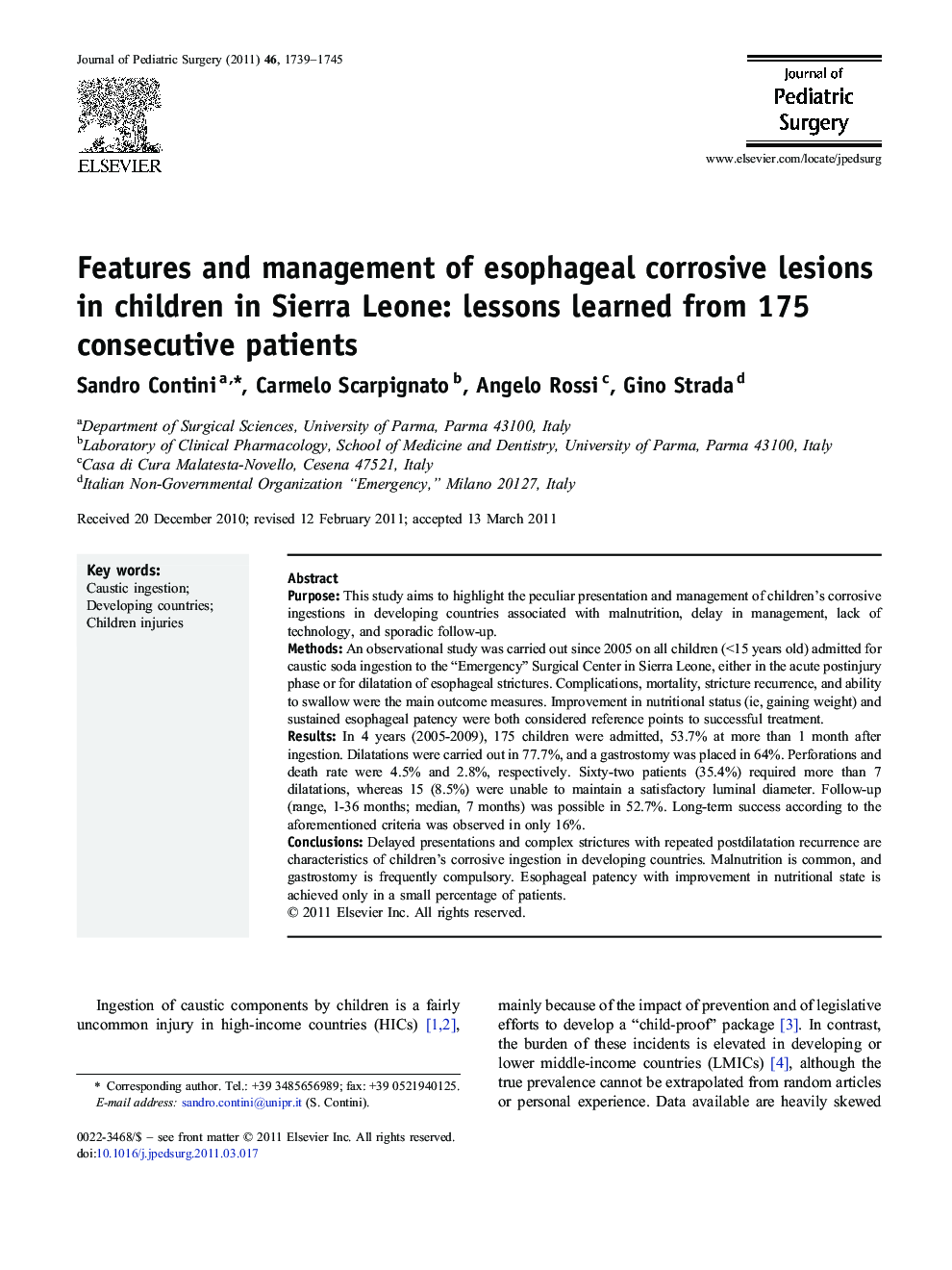| Article ID | Journal | Published Year | Pages | File Type |
|---|---|---|---|---|
| 4156956 | Journal of Pediatric Surgery | 2011 | 7 Pages |
PurposeThis study aims to highlight the peculiar presentation and management of children's corrosive ingestions in developing countries associated with malnutrition, delay in management, lack of technology, and sporadic follow-up.MethodsAn observational study was carried out since 2005 on all children (<15 years old) admitted for caustic soda ingestion to the “Emergency” Surgical Center in Sierra Leone, either in the acute postinjury phase or for dilatation of esophageal strictures. Complications, mortality, stricture recurrence, and ability to swallow were the main outcome measures. Improvement in nutritional status (ie, gaining weight) and sustained esophageal patency were both considered reference points to successful treatment.ResultsIn 4 years (2005-2009), 175 children were admitted, 53.7% at more than 1 month after ingestion. Dilatations were carried out in 77.7%, and a gastrostomy was placed in 64%. Perforations and death rate were 4.5% and 2.8%, respectively. Sixty-two patients (35.4%) required more than 7 dilatations, whereas 15 (8.5%) were unable to maintain a satisfactory luminal diameter. Follow-up (range, 1-36 months; median, 7 months) was possible in 52.7%. Long-term success according to the aforementioned criteria was observed in only 16%.ConclusionsDelayed presentations and complex strictures with repeated postdilatation recurrence are characteristics of children's corrosive ingestion in developing countries. Malnutrition is common, and gastrostomy is frequently compulsory. Esophageal patency with improvement in nutritional state is achieved only in a small percentage of patients.
